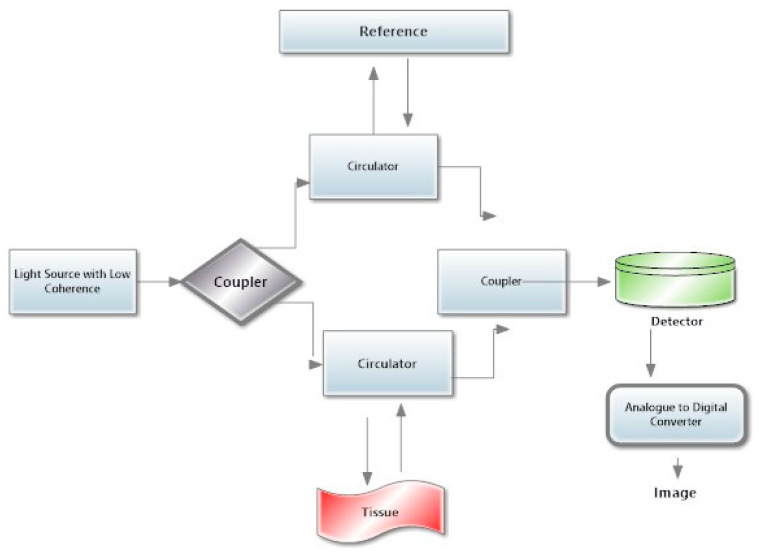Figure 2.
Schematic representation of OCT. The image shows the fundamental components and working principles of OCT. A low-coherence light source is a specialized light source emitting low-coherence light, typically in the near-infrared range, providing the necessary illumination for the imaging process. Couplers are used as optical components, such as beam splitters and fiber couplers, directing and dividing the light into the sample and reference arms. Optical circulators ensure unidirectional light propagation, guiding the sample light to the tissue and the reference light to the reference mirror. When using OCT to scan tissues, the emitted light interacts with the biological tissue, and the backscattered light carries information about the internal microstructure. High-sensitivity photodetectors are then used to capture the interference pattern formed by the combined sample and reference light, converting it into an electrical signal. Analog to Digital Converters (ADC) are part of OCT technology, in which the electrical signal is then fed into an Analog to Digital Converter, transforming the analogue signal into digital data for further processing. The digitized signals are processed to construct a high-resolution cross-sectional image of the tissue microstructure, revealing details such as layers and boundaries.

